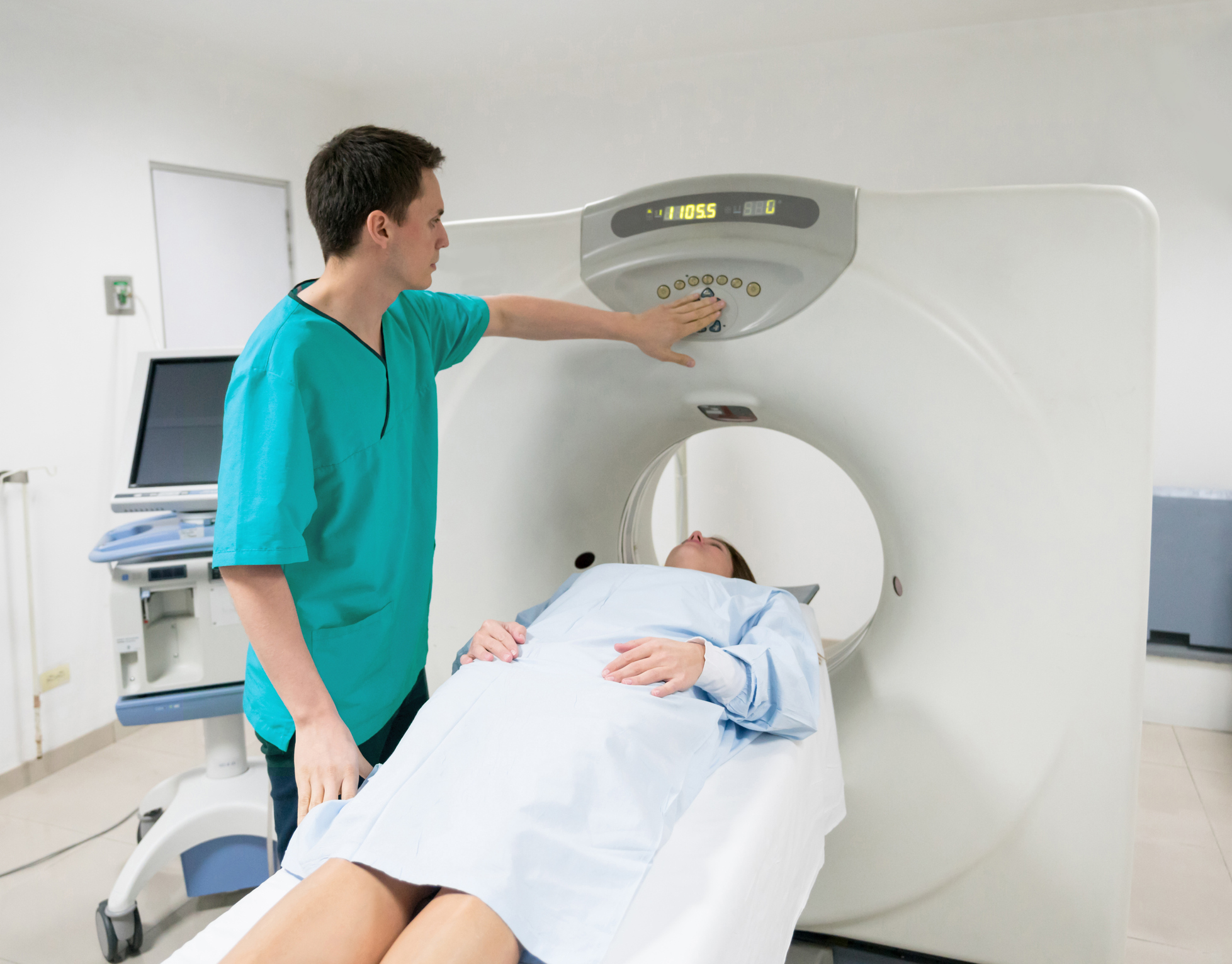
Nuclear Medicine
Nuclear medicine is minimally invasive and used to diagnose and treat conditions using radioactive tracers. These radioactive tracers are formulated to highlight certain types of cells. That allows imaging equipment to capture activity down to the cellular level.
As a diagnostic tool, nuclear medicine can reveal whether cancer has spread or how it’s reacting to treatment. The detailed and colorful images can also pinpoint the source of an infection or internal bleeding. Nuclear medicine can also shed light on neurological conditions, such as Alzheimer’s disease and brain cancer.
Radiologists and other specialists use these images as a guide to treat patients in real-time. Nuclear medicine technology can spare patients from invasive surgery that would have been necessary in the past to accomplish the same results.
Many people have questions about the dose of radiation they will receive to create nuclear medicine images. Please know that we follow the industry standard and only use what’s necessary to obtain the results we need. The dose is based on the individual’s body weight, the reason for the study and the part of the body involved.
Common uses of nuclear medicine
Nuclear medicine allows doctors to see both the anatomy and physical processes of an organ or body system. For example, they can observe as the body absorbs the tracer and reacts.
In many cases, nuclear medicine allows us to diagnose diseases sooner while they are in earlier, more treatable stages. Some examples where nuclear imaging can provide vital information include:
- Areas of the brain causing seizures
- Arthritis
- Biopsies
- Bone tumors
- Brain scans in Alzheimer’s patients
- Coronary artery disease and people at risk of a heart attack
- Esophageal, lung and colon cancer
- Internal bleeding and infections
- Location of a stroke
- Lymphoma
- Metastatic bone disease
- Muscle damage after a heart attack
- Respiratory problems
- Thyroid
Nuclear medicine imaging also is used to:
- Assess the effectiveness of medications
- Determine how drug addiction and neurological disorders have affected the brain
- Identify people at risk for specific diseases
- Improve disease treatments and monitor how patients respond to them
- Study organ function
- Understand pathways of diseases
Nuclear medicine imaging equipment
The radiotracer absorbed by tissues produces gamma rays, which are detected by:
- Gamma camera – Also called a scintillation camera, gamma cameras have radiation detectors that convert radioactive energy emitted from the patient into an image.
- PET/CT scans – Positron emission tomography/computed tomography combines two technologies. PET scans capture how an organ or system performs at the cellular level. CTs create a 3D map so doctors can measure the affected area's size, shape, and location.
- SPECT – Single-photon emission computed tomography/computed tomography. Gamma camera rotates around the body to produce detailed, 3D images. The hybrid image gives information about function and location – if the organ functioning normally, and if not, where the problem is occurring.
Therapeutic uses of nuclear medicine
Nuclear medicine technology can also deliver treatments.
For example, nuclear medicine is used to treat thyroid conditions, as well as diagnose thyroid diseases. If you have an overactive thyroid gland known, as hyperthyroidism, your doctor may recommend shrinking the gland with radioactive iodine, known as radioactive iodine ablation.
After you drink the radioactive solution at the hospital, your thyroid absorbs it and eventually kills thyroid cells. During your treatment appointment, you may undergo scans to check on how the thyroid is absorbing iodine.
Theranostics is an area of nuclear medicine that delivers treatment to cancer patients if chemotherapy is not working. Injections of radioactive material treat conditions, such as:
- Metastatic bone disease
- Neuroendocrine tumors
- Prostate cancer
- Thyroid cancer
The radioactive treatment attaches only to cancer cells, but it spares nearby healthy tissue from the drug.
Theranostics is also used for palliative care to provide pain relief when a disease can no longer be treated toward a cure.
Your nuclear medicine exam
When you receive a call to schedule your nuclear medicine exam or treatment, the scheduler will go over your test's requirements. Your preparation will depend on the purpose of the exam.
You may need to eat a particular type of diet or stop some medications or supplements. You may be restricted from eating or drinking anything for a certain period before your exam. For some procedures, you may need to avoid caffeine.
Please tell your scheduler if you’re breastfeeding or if you could be pregnant.
Choosing Spartanburg Regional for your nuclear medicine procedure
At Spartanburg Regional, we diligently review the latest literature and developments in nuclear medicine imaging and treatment to give our patients the most up-to-date care and technological advances.
Our caring, compassionate staff works hard to inform you, ensure your privacy and keep you well informed during your time with us.
Your referring physician should contact you within 24 hours with the results of the exam.











